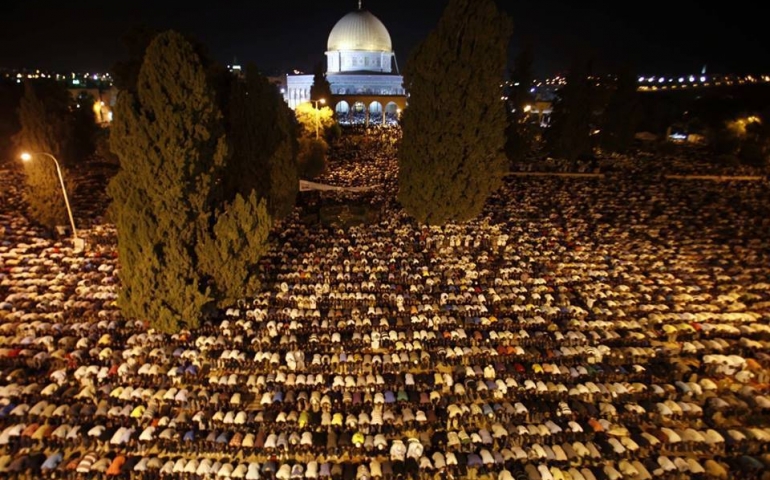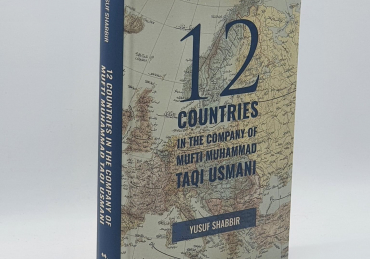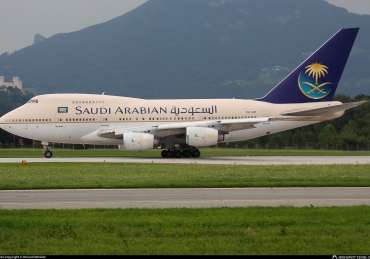Congregational Tahajjud Ṣalāh in Ramaḍān Book Query
Question
I have read your latest book الوضاحة في التطوع بالجماعة regarding congregational Tahajjud Ṣalāh in the month of Ramaḍān. Can you please clarify whether this practice in the way that it occurs in Makkah and Madīnah is permissible according to the Ḥanafī school of thought?
بسم الله الرحمن الرحيم
Answer
According to the Ḥanafī school of thought, congregational Tahajjud Ṣalāh in the month of Ramaḍān or otherwise is not permitted unless the congregation is less than four people. As outlined in the book, this position has been mentioned by many scholars including ʿAllāmah Ḥaṣkafī (d. 1088/1677), ʿAllāmah Ibn ʿĀbidīn (d. 1252/1836), Mullā ʿAlī al-Qārī (d. 1014/1605) and the vast majority of the scholars from the Indian sub continent in their books of Fatāwā. According to some of our scholars from the sub-continent such as Shaykh Ẓafar Aḥmad ʿUthmānī (d. 1394/1974) and Shaykh Khālid Sayf Allah Raḥmānī (b. 1376/1956), congregational Nafl Ṣalāh is permitted so long as it is performed without it being emphasised or it becoming habitual. However, this does not accord with the views of the majority of Ḥanafī scholars. More importantly, even according to these scholars, the permissibility does not equate to the practice being recommended or desirable. Thus, they do not recommend or endorse the prevalent practice in Makkah and Madīnah which occurs with emphasis and permanence. Thus, the Ḥanafī position is clear that congregational Tahajjud Ṣalāh in the month of Ramaḍān is not an established or desirable practice and is not permitted. This has also been narrated directly from Imam Abū Ḥanīfah (d. 150/767) himself.
It is a separate matter that there are some Ḥanafī scholars who have explicitly or implicitly permitted or encouraged congregational Tahajjud Ṣalāh in Ramaḍān. They include Shaykh al-Islām Mawlānā Ḥusayn Aḥmad Madanī (d. 1377/1957), Shaykh al-Islām ʿAllāmah Shabbīr Aḥmad ʿUthmānī (d. 1369/1949), Amīr al-Hind Sayyid Mawlānā Asʿad Madanī (d. 1427/2006), Shaykh ʿAbd al-Fattāḥ Abū Guddah (d. 1417/1997) and our respected Shaykh Muḥammad Yūnus Jownpūrī (b. 1355/1936). From my teachers, I have observed Shaykh al-Ḥadīth Mufti Shabbīr Aḥmad (b. 1376/1957), Shaykh Mawlānā Muḥammad Bilāl Maẓāhirī (b. 1379/1960), Shaykh ʿAbd al-Raḥīm ibn Dāwuḍ (b. 1385/1965), Mufti Ibrāhīm Rajā (b. 1386/1966) and others participate and lead congregational Tahajjud Ṣalāh in the month of Ramaḍān.
The practice of congregational Tahajjud Ṣalāh in Ramaḍān is supported by the practice of the companion Ṭalq ibn ʿAlī (n.d.) (may Allah be pleased with him) as a well as an edict of Anas ibn Mālik (d. 93/711-2) (may Allah be pleased with him). It is further supported by the views of Imam Mālik (d. 179/795), Imam Aḥmad ibn Ḥanbal (d. 241/855) and Imam Shāfiʿī (d. 204/820) as well as the practice of the people of Madīnah for many centuries.
Many people use the position of the other three schools of thought regarding congregational Nafl Ṣalāh and assume that their position on congregational Tahajjud Ṣalāh in Ramaḍān is the same. This is an incorrect application in so far as the Mālikī position is concerned because the Mālikī view regarding congregational Nafl Ṣalāh is similar to the Ḥanafī view. However, according to Imam Mālik (d. 93/711-2), congregational Ṣalāh in the month of Ramadan exceeding 20 Rakʿah is desirable, as reflected in the practice of 36 Rakʿah in his era in the blessed city of Madīnah. This application is also incorrect in relation to the Ḥanbalī school of thought because there is a distinction between the permissibility of congregational Nafl Ṣalāh and the active encouragement of congregational Tahajjud Ṣalāh, as it occurs in Makkah and Madīnah. To illustrate this, if congregational Tahajjud or Nafl Ṣalāh was organised outside of Ramaḍān in the way that it is organised in Ramaḍān, the Ḥanbalīs and for that matter the Shāfiʿīs (who similar to the Ḥanbalīs permit congregational Nafl Ṣalāh) would not permit this. The Ḥanbalī School expressly permits exceeding 20 Rakʿah Tarāwīḥ Ṣalāh and also returning in the night for congregational Tahajjud Ṣalāh in an organised manner.
In so far as the Shāfiʿī position on congregational Tahajjud Ṣalāh in Ramaḍān is concerned, it is not encouraged or desirable according to Imam Nawawī (d. 676/1277) and this appears to be the dominant view. However, many senior Shāfiʿī scholars have encouraged congregational Tahajjud Ṣalāh in Ramaḍān or permitted exceeding 20 Rakʿah Tarāwīḥ Ṣalāh. They include ʿAllāmah Ḥalīmī (d. 403/1012), Ḥāfiẓ Zayn al-Dīn al-ʿIrāqī (d. 806/1404), Ḥāfiẓ Walī al-Dīn al-ʿIrāqī (d. 826/1422), ʿAllāmah Qasṭallānī (d. 923/1517), Shaykh ʿAbd Allah ibn Sālim al-Baṣrī (d. 1134/1722), ʿAllāmah Suyuṭī (d. 911/1505), ʿAllāmah Taqī al-Dīn al-Subkī (d. 756/1355) and others. This view is also directly attributed to Imam Shāfiʿī (d. 204/820) as outlined in the book.
In conclusion, congregational Tahajjud Ṣalāh in Makkah and Madīnah is an established recommended practice according to Imam Mālik (d. 179/795) and Imam Aḥmad ibn Ḥanbal (d. 241/855), a view also shared by Imam Shāfiʿī and many senior Shāfiʿī scholars as well as a group of Ḥanafī scholars, as mentioned above. On the other hand, according to the mainstream position of the Ḥanafī school of thought, the practice is not recommended or permitted.
I hope the above clarifies the matter, and provides an overview of the book for the benefit of those who do not understand Arabic.
Allah knows best
Yusuf Shabbir
26 Rajab 1437 / 3 May 2016
__________
For further information about the book and how to purchase, click here.







Explanation of a narration in Sahih Ibn Hibban